AZoQuantum spoke with Dominik Šafránek, Ju-Yeon Gyhm, and Dario Rosa about their research that has provided a theorem that brings us one step closer to the development of functional quantum batteries. Their paper provides a set of conditions that must be met in order to engineer this technology in the future.
Please could you introduce yourselves?
Dominik Šafránek: I'm Dominik, an independent researcher originally from the Czech Republic, although I spent some time abroad in Nottingham where I did my Ph.D. I’ve also spent time in Austria and California, and now I'm in Korea.
Ju-Yeon Gyhm: I'm a Master's course student at SNU and I have had the great opportunity to work at IBS with Dario and Dominik and work on the quantum battery. Because I'm a student I did not have a lot of experience with the research before this.
Dario Rosa: I'm Dario. I got my Ph.D. in Milan and immediately after I moved to Korea. It's been almost eight years since I’ve been in Korea now. PCS, our center, is divided into several teams and I'm the team leader of the group on Quantum Many-Body Systems.
How did you begin researching battery charging and quantum batteries?
Dario: In my case, things started because I was invited by a friend to start work on this topic. He told me about this notion of quantum batteries and I realized that some of my background in quantum mechanics could be useful, as essentially I realized that charging a battery was looking at how to make the time evolution of quantum states efficient. So, I had a certain background on this and they said, okay, why not? So this was my beginning.
Dominik: I actually already knew about quantum batteries, but Dario got me involved in this project. I had expertise already in the latest fields, including limits on the speed of evolution, which is another kind of physics I was working on.
Ju-Yeon: For me, Dario also suggested that I work on quantum batteries. The first topic he gave me was really his research so I couldn't understand what he was doing, but I thought I could do other things to improve the results of the quantum batteries.
What is meant by a quantum battery?
Dario: Put simply, the idea is the following: a quantum battery is in a quantum state and we can think about a quantum state as a quantum version, for example, of the bits in a computer. You can associate energy to a quantum state by starting from a state that is very low energy and performing a charging process. You bring this state to another state, which has high energy. The idea is that the energy is stored in that state and can be used at a later stage by bringing the state back to the original configuration.
Dominik: In a classical battery, you change the basic chemical composition of a battery as you discharge it. So that's like changing one state of a battery to a different state to recharge it and turn it back on. This is the same, but now you are using the quantum state.
In quantum computers, they use superconducting qubits. These are also in quantum states because they can have different energy levels. Ultimately, the quantum battery is to the classical battery as the quantum computer is to the classical computer.
Dario: A new idea that came out in 2012, not by us, was to ask: can we use the energy level of a state to store our energy for a certain amount of time and then use it? This gave rise to the idea of a quantum battery. So bringing states to a highly excited point, keeping that as necessary, and then releasing this energy when desired.
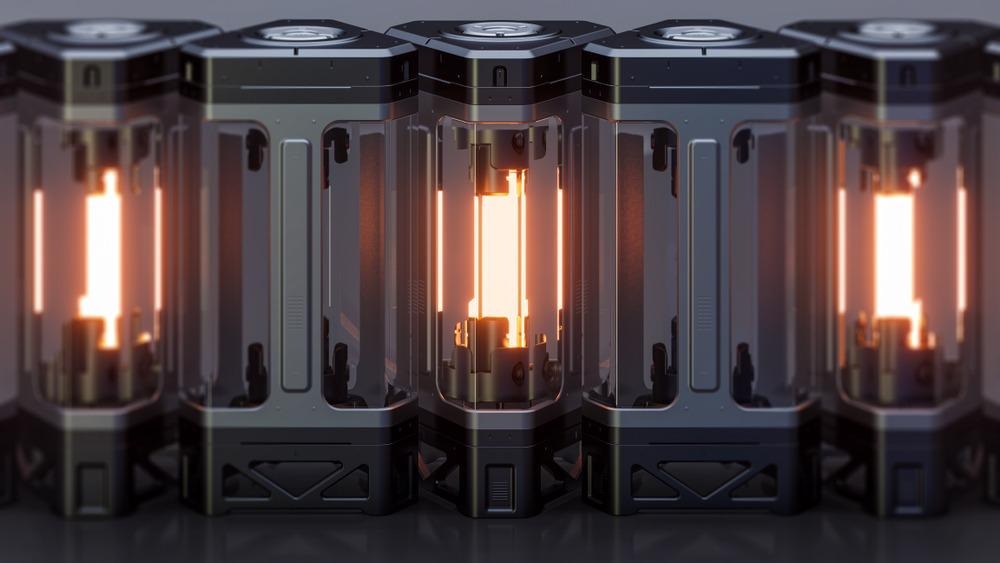
Image Credit: pinkeyes/Shutterstock.com
How significant are electric vehicles to combating emissions contributing to the climate crisis, and how can quantum technologies be applied?
Dominik: None of us are experts on the climate crisis, but I can talk as a physicist mostly. It is my impression that there are still some unresolved problems with using electric vehicles. Mostly this is because of limited technology to recycle Li-ion batteries right now. It takes a lot of carbon dioxide to actually create them, and if they're not recycled this is lost. But I’m aware that there are some companies working on this problem. There is also a potential problem with the global supply of the necessary ingredients for lithium-ion batteries, so if these things work in the end to combat the climate crisis, it's probably going to be with a slightly different design.
Electric vehicles are probably, as of now, a great step toward some future thing that could actually work in combating this crisis. Ultimately, considering the above-mentioned issues are solved, it is still important to consider where electric energy comes from. If it is created by burning wood or coal, for example, electric cars would be actually significantly worse than current combustion cars. Natural gas is much cleaner but still far from the zero-emissions goal. So I think it's necessary sooner or later to transfer our economy toward renewables in any way possible. By renewables, I would like to stress nuclear fusion, with which we can harness energy from hydrogen, which is exactly what our Sun does. This hydrogen would be collected from seawater, there wouldn’t be any carbon dioxide emissions, and there will be no nuclear waste. It will also be a much more stable source of energy, not dependent on clouds or wind. A large project of this type, a demonstration of a future power plant, is now being built in France.
Dario: Our paper is not directly related to cars. We are theoreticians, so applications such as electric vehicles are a good way of imagining how this possibility of using quantum technologies to charge can be useful in the future.
Any time you have a battery, which is made of many smaller batteries, you have room for a potential advantage by using quantum resources.
Again, the use of this technology in applications like electric vehicles is a long way off, and sometimes I like to joke and say that maybe I will not live long enough to see a car with quantum technology! But to be more specific, we know that electric cars are made with batteries that have many cells, around two hundred. So this is a potential point where quantum effects could be enormous and give enormous advantages.
How do quantum batteries enable faster charging?
Dominik: If you plug in something via your power socket, you have 230 volts inside—let's call it potential. Bigger potentials mean faster charging. We realized that actually if you use these quantum methods, the advantage comes from the fact that you can have one source of potential that charges all the cells simultaneously.
Let's say you have 10 classical cells. You would need to have 10 times the amount of voltage to charge them because all of them must have their own potential.
When using quantum resources, you need 10 times less potential to charge. Because of a global operation, the different cells all use the resource of this one potential and go through some very highly quantum states called entangled states.
More from AZoQuantum: Modeling Energy Storage and Charging Rates in Quantum Batteries
Dario: This kind of global operation makes charging faster, not because your state travels faster to the final state, but because they can find shorter paths. All the cells share the same charging source, and instead of running faster, they become smarter in finding the proper way to reach a certain point.
Your research has provided a theorem for the design of a quantum battery. Could you please describe how you were able to achieve this?
Dario: We don't do experiments. When we are lucky and we have good students, we can try to prove theorems. We can say that our result is rock solid because it's based on quantum mechanics that it is rock solid. The drawback is that, of course, we are very far from telling an engineer, okay, do this, do this, do this. We only have the theorem for the battery.
Ju-Yeon: As Dario said, we want to charge all of the cells at the same time. In quantum mechanics, the state is evolved by some other field of operations, and we found the necessary conditions for this field. So that is the result of our theorem. We can say that if we want to charge the quantum batteries very fast, we have to satisfy the conditions in our paper.
Dominik: Basically our paper says ‘if you want to achieve this, you really need to include this or satisfy this necessary condition in your experimental design or engineering design’. So it wouldn't be possible to make a quantum battery without this. This is kind of proof that it is in principle possible and what is necessary to achieve it, but not a specific design.
Dario: What we proved was a conjecture that was formulated in 2017 by another group. When good research comes out it is never the merit of a single group. I mean, it's always a community that is moving, providing results, and so on. The community debate was useful because somehow they already found that many other possible sources for quantum advantages were gone, and they pinpointed that there were just two candidates, global operations and all-to-all coupling. There was just confusion about which of the two is necessary—maybe both, maybe just one, and so on.
So I think it should be emphasized that this kind of result really requires the presence of a strong community that communicates well and is open to discussion. This is what in the end creates the results.
Are you hoping that someone or yourselves will then create a plan to build a physical battery based on your model in the future?
Dario: At the experimental level, there are two big experiments already that show the presence of the quantum advantage, where essentially they demonstrated that by using these ingredients and by using global operations, they can really achieve this super-linear scaling of the charging power.
Exactly how much faster will quantum battery charging be compared to conventional batteries?
Dario: At most you can be N times faster where N is the number of cells that make the battery.
Of course, to achieve that you need to make a fully global operation, as we have described. This is extremely complicated technologically, even experimentally. So probably in the best-case scenario there will be a compromise between what you can do and what you could in principle do. There will be a moment in which we will start to have advantages, but not as large as theoretically possible.
Dominik: To maybe put it into context, some Korean EV developers have batteries that consist of just six cells, and Tesla specifically consists of 7,000 cells. In principle, you could make a six times higher speed or 7,000 times higher speed. But the thing is, the technology is not at the level where we can control these extremely large entangled states shared amongst so many different parts. That is experimentally very challenging, and it's not done on very big systems.
What kind of timeline should we expect for the development of quantum technologies?
Dominik: There are maybe three quantum technologies already used that are worth mentioning, and the first is quantum cryptography. Now, banks in China are using quantum cryptography to make secure communications between each other.
Then, the Nobel Prize in 2017 was given for gravitational wave detection using a quantum sensor. The technology is a large interferometer based on quantum physics, and is already implemented and very useful.
And then of course we have quantum computers that are built but not very useful at this point. It is possible that they will become very useful in the next 10-20 years. I think we are maybe in the same timeframe with these quantum batteries— we probably need around five more years of experiments. Then, maybe in five to ten years, we can think about some applications that could be actually useful for industry.
Dario: Of course, the first applications will be super tailored to very high technology.
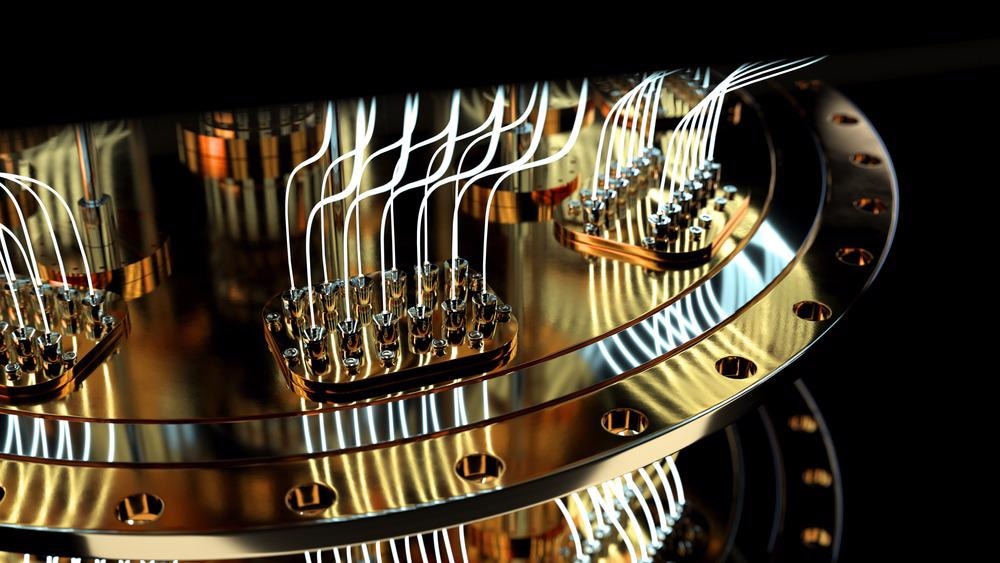
Image Credit: Bartlomiej K. Wroblewski/Shutterstock.com
How far-reaching do you believe this research will be?
Dominik: Our result is a step towards the future design of quantum batteries. This may lead first to experimental demonstrations and then finally to engineering and industrial applications. Since we're doing basic research, there are many levels and our small group of three people is not capable of doing both the experiments and the engineering design. So this needs to be a global effort to make a global shift, which includes thousands of people.
Dario: From my background, I come from a very different community. I did my Ph.D. in string theory, so I was doing something completely different and I will say that when I moved to this community of quantum thermodynamics what I found remarkable was the fact that there is a joint effort and communication and so on between experimentalists and theoreticians.
I will say that quantum thermodynamics at this moment is likely less well known among companies. Many companies are investing in quantum computing, but not many are investing in quantum thermodynamics. One possibility for this is because the field is far younger, so maybe this is just part of the game. But it's great that theoreticians and experimentalists are somehow on the same level at this moment.
Dominik: I think our research might create a shift towards maybe more institutional and public support for funding these technologies. If you can tell them ‘okay, what is the end goal, what is in principle achievable’ then you can ask for more money so we can actually give it to experimentalists and engineers.
Before there's funding from companies, they need to see potential, but they cannot see profit from just theoretical papers. There needs to be some funding for experiments, therefore.
What questions must still be answered?
Dario: Still at the level of the model, with this theorem we can say that we concluded the quest for the best possible power that can be reached. Once you reach this highly excited state that has a lot of energy, of course you want to make use of that energy. And so you need to develop, even at a theoretical level, a theorem on how to extract energy from this highly entangled state. This is still incomplete or not very practical, and is one of the main questions that we hope to answer soon.
Dominik: If you have a battery and you want to charge your phone with that battery, you need to discharge the battery, right?
Dario: And we're working on that. What we found was the maximum achievable bound, but Ju-Yeon is working more on how to better characterize which states are suitable to reach such a bound.
Ju-Yeon: Now I'm interested in how to quantify the measurements to expel the power. So it is more a question of making a better bound for the quantum batteries.
Where can readers find more information?
Link to the research paper: https://journals.aps.org/prl/abstract/10.1103/PhysRevLett.128.140501
About the Authors
Dominik Šafránek
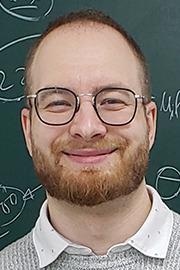 Dominik was born in the Czech Republic. He did his PhD in Nottingham, UK, and Vienna, Austria, then continued with a PostDoc in Santa Cruz, California. Right now, he resides in Daejeon, South Korea, as an independent researcher. He studied and worked on a variety of topics, including as interpretations of quantum mechanics, quantum metrology (science of measurements using quantum systems and their properties), Gaussian quantum states (such as laser light), the concept of entropy (measure of disorder, closely related to energy extraction), and quantum batteries (batteries made of quantum states, exhibiting advantages over classical batteries). He loves deep discussions and sharing his knowledge. He enjoys outdoor sports, dancing, playing the piano, and getting lost in music.
Dominik was born in the Czech Republic. He did his PhD in Nottingham, UK, and Vienna, Austria, then continued with a PostDoc in Santa Cruz, California. Right now, he resides in Daejeon, South Korea, as an independent researcher. He studied and worked on a variety of topics, including as interpretations of quantum mechanics, quantum metrology (science of measurements using quantum systems and their properties), Gaussian quantum states (such as laser light), the concept of entropy (measure of disorder, closely related to energy extraction), and quantum batteries (batteries made of quantum states, exhibiting advantages over classical batteries). He loves deep discussions and sharing his knowledge. He enjoys outdoor sports, dancing, playing the piano, and getting lost in music.
Dario Rosa
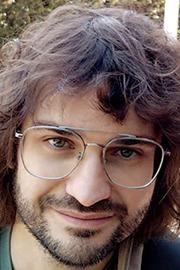 I am a theoretical physicist currently working on quantum chaos, quantum many-body physics and quantum thermodynamics, mostly. However, I got my Ph.D. degree (in Milano-Bicocca University and in 2014) in string theory and quantum gravity. After that, I moved directly to Korea where I have been a post-doc in Seoul National University (2014-2016), Korea Institute for Advanced Study (KIAS, 2016-2020), Korea Advanced Institute of Science and Technology (KAIST, 2020) and I finally joined IBS in 2021 where I am leading the research group ``Quantum Chaos in Many-Body Systems''. Starting from March 2022 I am also an associate professor at the University of Science and Technology (UST). In my free time (when I have some free time...:-D) I enjoy video games, running, and playing with my three cats and my son!
I am a theoretical physicist currently working on quantum chaos, quantum many-body physics and quantum thermodynamics, mostly. However, I got my Ph.D. degree (in Milano-Bicocca University and in 2014) in string theory and quantum gravity. After that, I moved directly to Korea where I have been a post-doc in Seoul National University (2014-2016), Korea Institute for Advanced Study (KIAS, 2016-2020), Korea Advanced Institute of Science and Technology (KAIST, 2020) and I finally joined IBS in 2021 where I am leading the research group ``Quantum Chaos in Many-Body Systems''. Starting from March 2022 I am also an associate professor at the University of Science and Technology (UST). In my free time (when I have some free time...:-D) I enjoy video games, running, and playing with my three cats and my son!
Ju-Yeon Gyhm
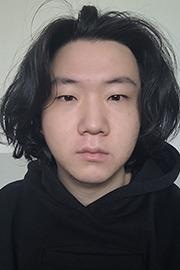 Ju-Yeon Gyhm was born in Seoul, South Korea. He reecived a bachelor's degree in physics from Seoul National University. He worked at the Institute of Basic Science as a research assistant, and now he is in a master's course at Seoul National University. He worked on Quantum Batteries (Batteries that store and convert energy at a quantum state), especially the bound of the quantum advantage for the power of quantum batteries. Now, he studies how to quantify entanglement to estimate the quantum advantage of quantum batteries and quantum meteorology.
Ju-Yeon Gyhm was born in Seoul, South Korea. He reecived a bachelor's degree in physics from Seoul National University. He worked at the Institute of Basic Science as a research assistant, and now he is in a master's course at Seoul National University. He worked on Quantum Batteries (Batteries that store and convert energy at a quantum state), especially the bound of the quantum advantage for the power of quantum batteries. Now, he studies how to quantify entanglement to estimate the quantum advantage of quantum batteries and quantum meteorology.
Disclaimer: The views expressed here are those of the interviewee and do not necessarily represent the views of AZoM.com Limited (T/A) AZoNetwork, the owner and operator of this website. This disclaimer forms part of the Terms and Conditions of use of this website.